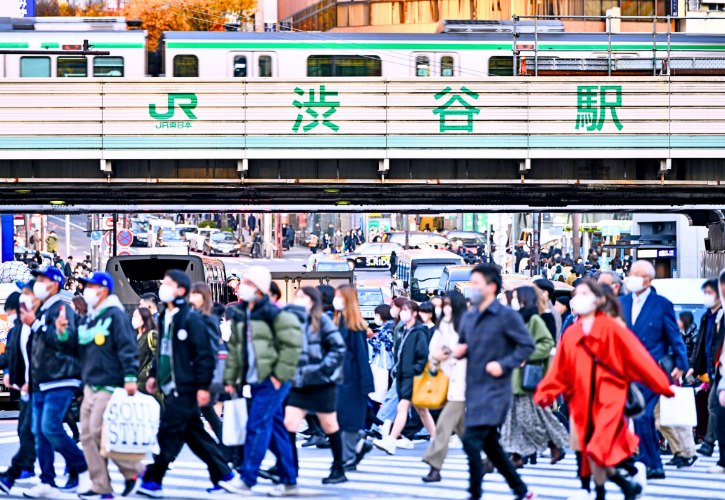
Japan is experiencing its biggest whooping cough outbreak in 7 years, with cases now four times higher than last year.
If you’re planning to visit soon, it’s important to know what’s happening, which areas are most affected, and how to protect yourself.
I hope this information helps you stay safe, because as long as you take simple precautions, it’s still safe to enjoy your trip. 😊
1. Current Outbreak Status
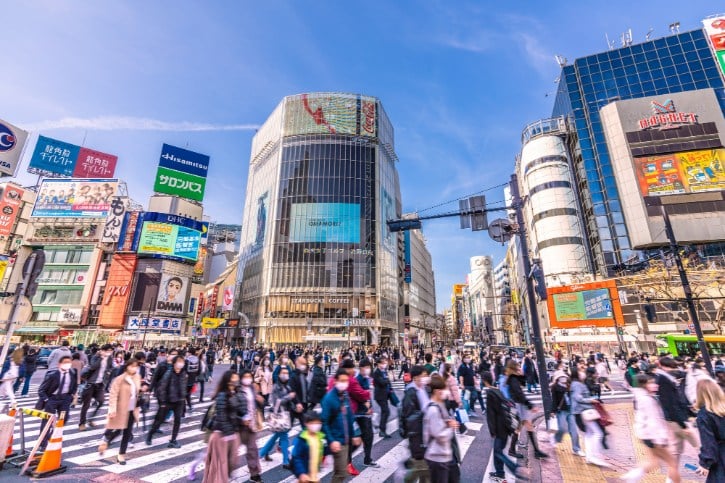
a. Severity of the Outbreak
Japan is currently experiencing its largest whooping cough outbreak in the past seven years.
In 2025, more than 16,475 cases have already been reported, which is about four times higher compared to the entire year of 2024.
b. Affected Areas
The outbreak has spread across the whole country, affecting both big cities and smaller towns.
Major urban areas like Tokyo and Osaka, as well as prefectures such as Hyogo, Chiba, and especially Fukuoka, have reported significant numbers of infections.
c. Reasons for the Increase
The rapid increase is mainly due to fewer people wearing masks after COVID-19 restrictions ended, which allows whooping cough to spread more easily.
d. Recent Fatality
Sadly, a one-month-old baby recently died from whooping cough in Tokyo, highlighting how serious the situation has become.
2. What Whooping Cough Actually Is?
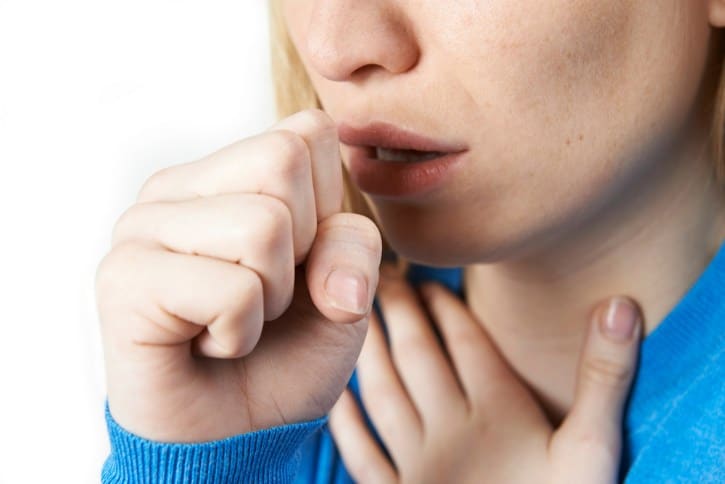
a. Basics of the Disease
Whooping cough is a very contagious infection that affects your lungs and throat.
b. Early Symptoms
Initially, you might think it’s just a common cold, with symptoms like a runny nose, sneezing, mild cough, and low fever.
c. Severe Symptoms
After about one week, the cough worsens significantly, leading to intense coughing fits. These episodes can last several weeks or months if not treated.
d. The “Whoop” Sound
After coughing spells, you might hear a noticeable “whoop” sound as you struggle to catch your breath.
e. Potential Complications
Whooping cough can be serious, especially for babies, elderly people, or anyone with a weaker immune system, leading to complications like pneumonia.
3. Who Is Most at Risk?

a. Infants and Newborns
Newborn babies and infants under seven months old are most at risk since their immune systems aren’t fully developed.
b. Unvaccinated Children
Children who haven’t received their recommended vaccinations face increased risks of catching the illness.
c. Pregnant Women
If you’re pregnant, you’re at risk because you could pass the infection to your unborn child.
d. Elderly Travelers
Older travelers should also be careful, as their immune systems are weaker and more vulnerable.
e. People with Chronic Illnesses
People with chronic health conditions like asthma, diabetes, or other illnesses affecting their immune systems should be especially cautious.
4. Where Are the Hotspots?

The highest number of whooping cough cases has been reported in Fukuoka, with about 895 infections as of early May.
Other areas experiencing significant outbreaks include Osaka with 375 cases, Niigata with 357 cases, and Tokyo, which has seen 330 cases along with the tragic infant death.
Okinawa has reported 289 cases, Hyogo Prefecture (including Kobe) has seen 274 cases, and Miyazaki has reported 239 cases.
If you’re visiting any of these places, take extra precautions.
5. Symptoms You Should Watch For
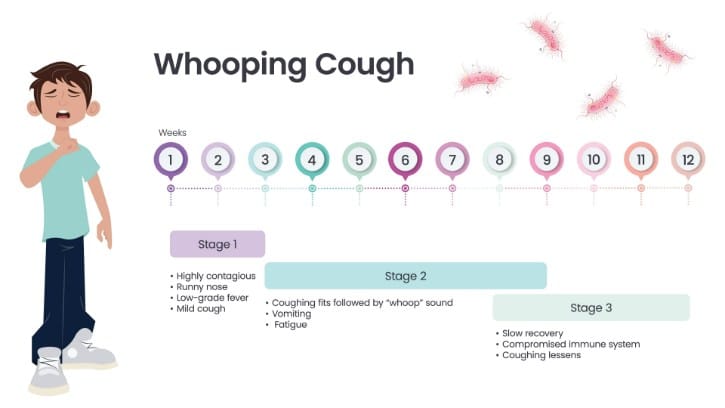
a. Initial Cold-like Symptoms
Early symptoms include a mild cough, runny nose, sneezing, and slight fever.
b. Severe Coughing Fits
After about one week, the cough becomes severe, frequent, and difficult to control.
c. Whooping Sound
You might notice a distinct “whoop” sound when breathing in after intense coughing fits.
d. Vomiting and Exhaustion
Severe coughing episodes may cause vomiting and extreme tiredness, especially at night.
e. Breathing Issues in Babies
Infants might show difficulty breathing or pauses in breathing. Immediately seek medical care if this occurs.
6. How the Disease Spreads?
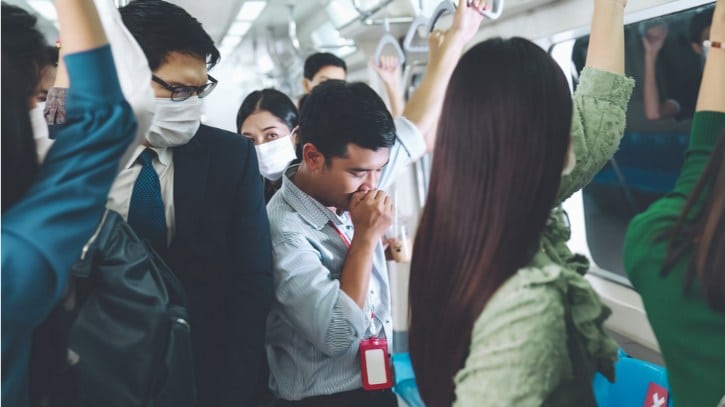
Whooping cough spreads mainly through tiny droplets in the air when infected people cough or sneeze around you.
It’s especially easy to catch in crowded places like buses, trains, shops, or indoor areas.
You can also get it by sharing food, drinks, utensils, or through close physical contact like kissing someone infected.
People often spread the illness before realizing they have more than just a cold, making it especially easy to catch.
7. How to Protect Yourself?
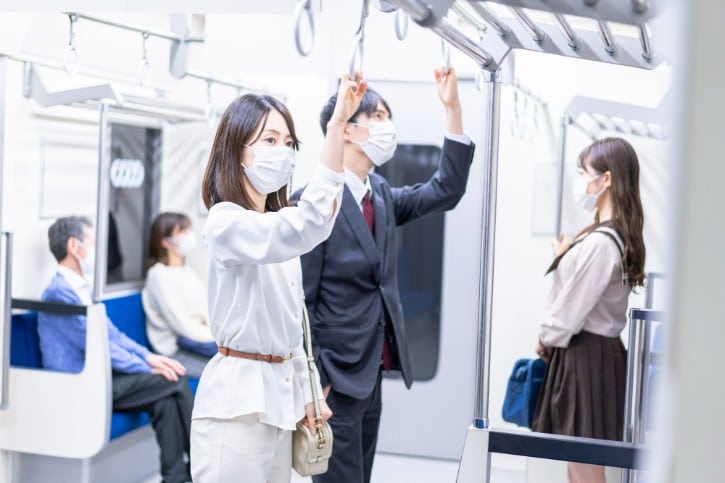
a. Check with Your Doctor About Vaccination
Before traveling, it’s highly recommended you check with your doctor or local clinic to ensure your whooping cough vaccinations are up to date.
b. Vaccination Recommendations
- Children: Usually receive four doses between 2 months and 18 months.
- Adults: Advised to get a booster shot every 10 years, especially if frequently around infants.
c. Avoid High-Risk Areas with Unvaccinated Babies
If traveling with unvaccinated infants, avoid hotspot areas like Tokyo, Osaka, and Fukuoka.
d. Regular Hand Hygiene
Frequently wash your hands or use hand sanitizer to prevent catching the infection.
e. Mask Wearing Indoors
Wearing a mask is strongly recommended, especially in crowded indoor areas and public transport.
f. Stay Away from Sick People
Keep a safe distance from anyone showing symptoms of coughing or sneezing.
g. Proper Coughing Etiquette
Always cough or sneeze into your elbow or a tissue and immediately wash your hands afterward.
h. Travel Insurance
Ensure your travel insurance covers medical care for infectious diseases in case you need medical attention during your stay.
Related Posts
Photo Credit:
Photos by PIXTA

